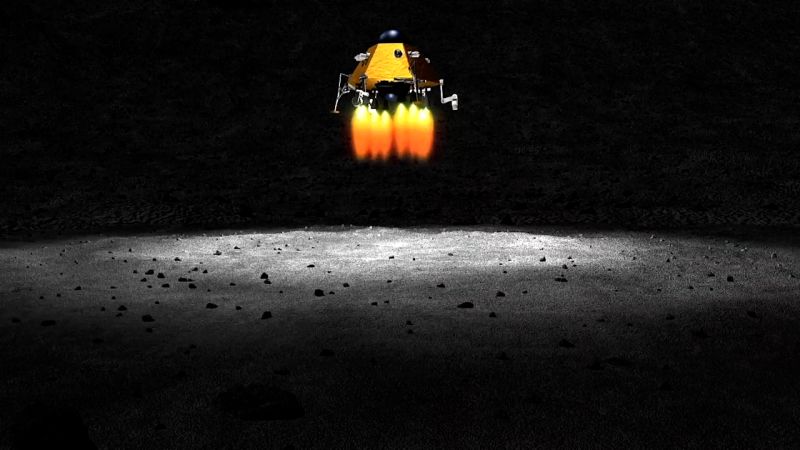China’s ambition in space exploration is reaching new heights as the nation lays plans to dispatch a flying robot to the far side of the moon next year. This initiative is part of an overarching strategy to investigate the presence of frozen water on the lunar surface, which is considered vital for the future of lunar missions. As the Chang’e-7 mission gears up, it represents a significant step towards China’s goal of eventually landing astronauts on the moon within the next five years.
The flying robot, termed a “flying detector,” is set to be deployed specifically to the moon’s south pole, a region that is believed to harbor essential resources not yet explored in detail. State media has reported that the mission encompasses multiple components designed to facilitate a comprehensive exploration of the lunar environment. The intent behind this mission goes beyond mere exploration; it seeks to not only gather scientific data but also facilitate the long-term feasibility of sustained human presence on the moon.
In recent years, China has significantly ramped up its efforts to establish itself as a formidable entity in the arena of space exploration, a domain also being pursued by other nations such as the United States. The motivations for this vigorous push into space go far beyond scientific inquiry; they also encompass a range of strategic interests including resource acquisition and national security considerations. As space exploration evolves, it is clear that access to extraterrestrial resources could have substantial implications for energy, technology, and national capabilities.
The search for water on the lunar surface is not without precedent. Notably, in the previous year, Chinese scientists successfully identified lunar water within soil samples collected by the Chang’e-5 lunar probe. Similarly, NASA and various Indian spacecraft have reported detections of what appears to be water on the moon’s surface. However, many scientists suggest that the true treasures may lie not just in surface findings but in the ice believed to be preserved deep within craters on the moon’s far side.
The Chinese space experts have articulated that this quest for lunar ice is integral to their preparations for establishing a research base at the moon’s south pole. According to Wu Weiren, the chief designer for China’s Lunar Exploration Project, the existence of deep caves in that region raises the potential for water deposits. He expressed hope that the flying detector could reach one or more of these caves for direct inspection after landing. Such discoveries could critically support future lunar missions by providing a reliable water source for astronauts.
Notably, while the identification of lunar water has sparked excitement and speculation concerning potential long-term habitation, experts caution against hasty conclusions regarding its utility. Although finding water is a significant hurdle cleared, the ability to drink it or grow crops still hinges on numerous variables, such as the availability of water and its chemical composition.
Recently, the China National Space Administration has been executing a series of increasingly complex robotic lunar missions. Among these, last year’s successful return of lunar samples from the moon’s far side marked a historic achievement for the nation. Looking forward, China aims to become the second country—after the United States—to land astronauts on the moon, projecting that this milestone could be reached by 2030.
In preparation, the Chang’e-7 mission slated for 2026 will involve a comprehensive investigation of the lunar south pole, utilizing various assets including an orbiter, lander, rover, and of course, the innovative flying detector. This flying robot—still somewhat cloaked in mystery—will be equipped to adaptively maneuver upon landing, emulating the way humans would jump from heights, though specific design details have yet to be fully disclosed.
The technological advancements demonstrated by this flying robot underscore China’s commitment to overcoming the intense challenges posed by the harsh lunar environment. With temperatures dipping to as low as -250 degrees Fahrenheit, the durability of the robot will be rigorously tested. Tang Yuhua, the deputy chief designer of the Chang’e-7 mission, has acknowledged the formidable nature of the lunar environment, viewing long-term operational sustainability as a significant challenge.
As the world watches China’s every move in lunar exploration, the outcomes of these missions could redefine humanity’s relationship with space and unlock further potential for exploration beyond our planet. The collaborative reporting from CNN’s Simone McCarthy, Jessie Yeung, and Ashley Strickland underscores the global interest vested in these groundbreaking developments.



